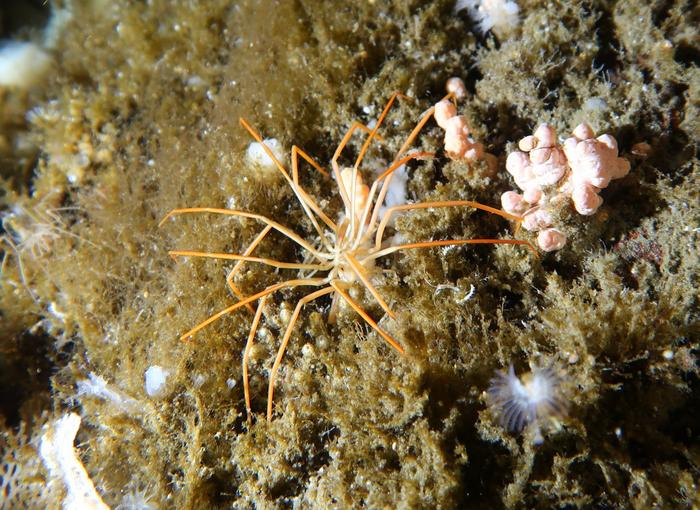“Giant”, “sea”, and “spider” are perhaps not words best seen in combination – but unfortunately for any arachnophobes and thalassophobes out there, giant Antarctic sea spiders have crawled straight out your nightmares and into existence. Although not technically spiders, these strange, spindly creatures certainly look like their namesake (that’ll be the legs), and they hide a fair few secrets, some of which have finally been revealed after more than 140 years of mystery.
The common giant Antarctic sea spider’s (Colossendeis megalonyx) reproduction has long puzzled scientists. Up until very recently, they knew nothing at all about the reproductive ecology, embryology, or larval development of the species, or others in the family Colossendeidae.
However, during a 2021 expedition, a team from the University of Hawaiʻi at Mānoa were able to observe some of their reproductive habits for the first time, and solve part of the mystery.
“In most sea spiders, the male parent takes care of the babies by carrying them around while they develop,” lead researcher Professor Amy Moran said in a statement. “What’s weird is that despite descriptions and research going back over 140 years, no one had ever seen the giant Antarctic sea spiders brooding their young or knew anything about their development.”

Some sea spiders are tiny, but Antarctic species can have leg spans of more than a foot.
Image credit: S. Rupp
Diving under the Antarctic ice, the team happened upon and collected groups of giant sea spiders that appeared to be mating, taking them to tanks for further observation.
Two of the groups produced thousands of tiny eggs contained in a gelatinous cloud, which were found to have the same size and appearance as eggs not grown in the lab. Their development was slow, as is characteristic of cold-blooded animals in the Antarctic, with the first larva hatching approximately eight months after eggs were laid. Hatchlings, they witnessed, sunk in the water and did not swim.
The team also observed the adults’ behavior around the eggs, finding that one adult – presumed to be a father – stayed close, appearing to groom the cluster of eggs, for almost three days. During this time, the eggs became compacted and were attached to rock.
Most species of sea spiders carry their eggs until they hatch, which is known as brooding, making this behavior highly unusual.
“Post-spawning care of nonbrooded embryos in the Colossendeidae is an exciting finding,” the researchers write in a paper describing their findings, “because it may represent an evolutionarily intermediate strategy between free-spawning and the paternal brooding exhibited by most other groups of sea spiders.”
“We were so lucky to be able to see this,” PhD student Aaron Toh added. “The opportunity to work directly with these amazing animals in Antarctica meant we could learn things no one had ever even guessed.”
This groundbreaking first look at the reproductive strategy of C. megalonyx, “the largest and most conspicuous of the sea spiders”, is so important for understanding more about the biology and natural history of these bizarre animals, and others like them, that live in one of the least studied parts of the ocean.
The study is published in the journal Ecology.
Source Link: Giant Antarctic Sea Spiders’ Reproductive Secrets Finally Revealed After 140 Years